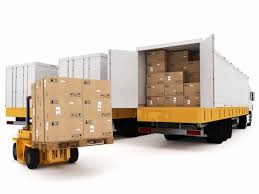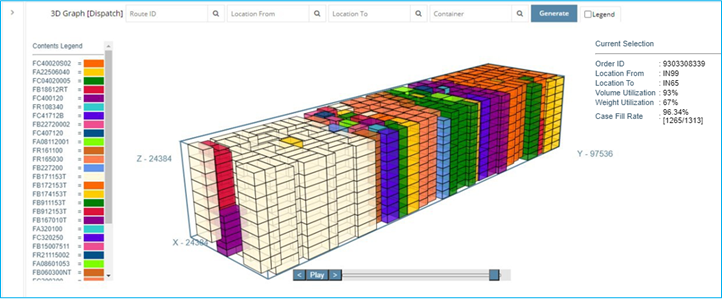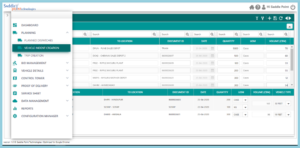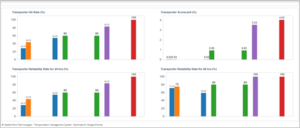- June 17, 2021
- Posted by: Saddle Point
- Category: Supply Chain Digitization, Supply Chain Visibility


In an era when working remotely has become the new normal, digitization of core supply chain functions have become necessary for the survival of an organization. From a perspective of ‘putting more people to manage and firefight’ that is prevalent in the industry, the focus is moving towards automation and digitization.
Role of Logistics in Revenue Generation
Logistics plays a pivotal role in converting factory output into cash for an organization. Its criticality is underscored by the fact that it operates closest to the point of consumption. Any disruptions in the logistics process directly impact fill rates and revenue realization.
Challenges Faced in Logistics Processes
Many companies spend huge amount of effort in-terms of manpower and time to enable, manage and monitor the various logistics processes that are associated with inbound Raw material movement, movement between plants and sub-contractors and outbound logistics.
Lot of time and energy are also spent to ensure that the vehicles deliver goods on time, PoDs are captured, invoices are reconciled and insurance claims processing are tracked.
Case Study 1:
One of the largest FMCG companies with around 400 SKUs has an extensive pan India distribution network that consists of 10 plants, 5 hubs, 30 CFAs and 2500 distributors. Every month it takes services from 70 TSPs and deploys over 3000 vehicles for long haul and over 18,000 LTLs for short haul.
The organization had implemented SAP-IBP many years back for optimizing dispatch planning. However, the three plants that are located at different corners of the same city have been modeled as a single plant. This creates lot of operational challenges in creating FTLs across these 3 locations and lot of confusion happens as the vehicles report for duty at the wrong plant. Moreover, practical stacking norms constraints (heavier product cannot go on top of a lighter product, same product should be stacked together, layered stacking etc.) cannot be modeled in dispatch planner.
Also, the IBP dispatch plan is generated by assuming a standard size of the truck type and load-ability factor. However, once the truck reports for duty, the actual size may vary because of customizations done to the vehicle by the transporter. Most of the vehicles are open body (non-container) vehicles. Here the dimensions are within RTO limits but vary depending of what the owner has done to his vehicle, e.g. vehicle lengths are enhanced (but not recorded), side supports are put of variable height, extra rods attached that limit the height etc.
Because of these variations, the actual STO quantity undergoes many manual changes which makes the process error prone and sub-optimal.
The Solution: Practical Constraints Considered for Maximizing Packing Density
An integrated Container Load Optimizer (CLO) and TMS were used to maximize the packing density by considering various practical constraints like
- Actual dimensions of the Truck and SKUs.
- Stacking norms (lighter SKUs on top of heavier SKUs only)
- Maximum stacking height based on weight bearing capacity
- Layered stacking to distribute stacks evenly
- Group stacking (same SKU should be stacked together)
- Loading Sequence (Heavy to Light or Light to Heavy)


In addition to digitization of all logistics processes such as bidding, tracking with geo-fencing, ePOD, Invoice reconciliation, insurance claims processing and Logistics control tower, seamless integration of the TMS and CLO with SAP ensured that the packing density is improved by at-least 5%~6%.
Case Study 2:
One of the largest and oldest companies in the Home Fragrance and Incense Sticks business underwent a complete transformation and digitization of their logistics processes. Their logistics network comprised of 400 Vendors, 30 Manufacturing Plants, 25 Packaging Plants, 200 Sub-Contractors, 5 Mother Depots, 35 Depots and 6000 Customers. The logistics operations for supply chain functions like purchasing, sub-contracting and distribution were brought into one common system, automated and digitized.
Sub processes like cartage, merging of trips, multi drop/multi pick shipments, handling multi modal transport like a combination of road and rail were also handled.


Because of such a complex network, the organization used to spend considerable amount of time and effort to manually enable, monitor and reconcile each goods movement. Moreover, when it came to transporter payments, the logistics t
eam used to spend lot of time in validating each invoice. The accounting team also had to spend considerable time and effort to roll up the expenses to the right cost center to create visibility of the logistics expenses under the right subsidiary.
This extensive automation effort also required real-time integration with the SAP ERP backbone.

A quick project implementation helped the organization cut down its manual processes dr

There was also a reduction in logistics costs as truck utilization improved with options of merging trips and reverse haul possibilities opening up because of better ETA visibility to the planners.
FAQs
Digitization is essential for the survival of organizations as it allows for automation and efficient management of core supply chain processes. It enables improved productivity, cost savings, and adaptability to the remote working environment.
Logistics processes often involve complex operations such as managing inbound and outbound movements, coordinating with multiple parties, and reconciling invoices. Additionally, ensuring timely deliveries, capturing proof of deliveries (PoDs), and tracking insurance claims can be time-consuming and prone to errors.
By considering practical constraints such as actual dimensions of trucks and products, stacking norms, weight-bearing capacity, layered stacking, and loading sequence, packing density can be optimized. Integrating solutions like a Container Load Optimizer (CLO) and Transportation Management System (TMS) can help achieve this goal.
By automating and digitizing logistics operations, companies in the home fragrance industry can streamline their complex supply chain networks. This transformation leads to reduced manual efforts, improved visibility, better ETA tracking, and cost savings through enhanced truck utilization and optimized invoicing processes.
Logistics transformation projects encompass various sub-processes, including cartage management, trip merging, multi-drop/multi-pick shipments, and handling multi-modal transport. These initiatives aim to simplify operations, enhance efficiency, and reduce time spent on manual coordination and validation.
